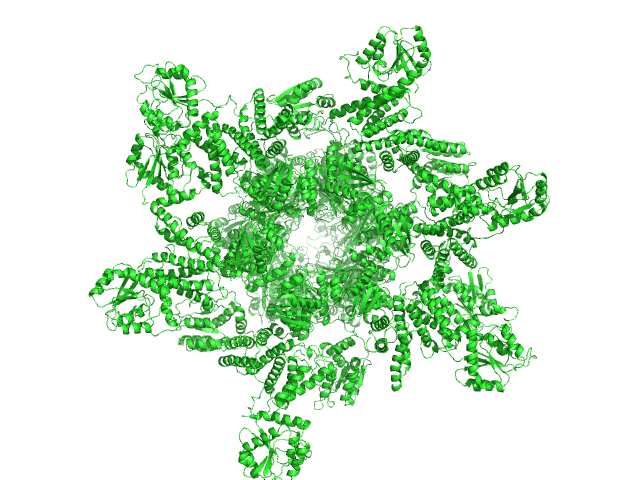|
Synchrotron SAXS data from solutions of the circadian clock KaiA-KaiB-KaiC ternary protein complex in 50 mM sodium phosphate buffer, 150 mM NaCl, 5 mM MgCl2, 0.5 mM EDTA, 1 mM ATP, 1 mM DTT, 50 mM arginine, 50 mM glutamine, pH 7.8 were collected on the BL-10C beam line at the Photon Factory (PF), High Energy Accelerator Research Organization (KEK, Tsukuba, Japan) using a Pilatus3 2M detector at a sample-detector distance of 3.0 m and at a wavelength of λ = 0.15 nm (I(s) vs s, where s = 4πsinθ/λ, and 2θ is the scattering angle). In-line size-exclusion chromatography (SEC) SAS was employed. The SEC parameters were as follows: A sample was injected onto a column at 25°C. The data were normalized to the intensity of the transmitted beam and radially averaged; the scattering of the solvent-blank was subtracted.
The molecular weight was determined by analytical ultracentrifugation (AUC). SEC column and SEC parameters: UNKNOWN. X-ray exposure time: UNKNOWN.
|
|
 s, nm-1
s, nm-1

